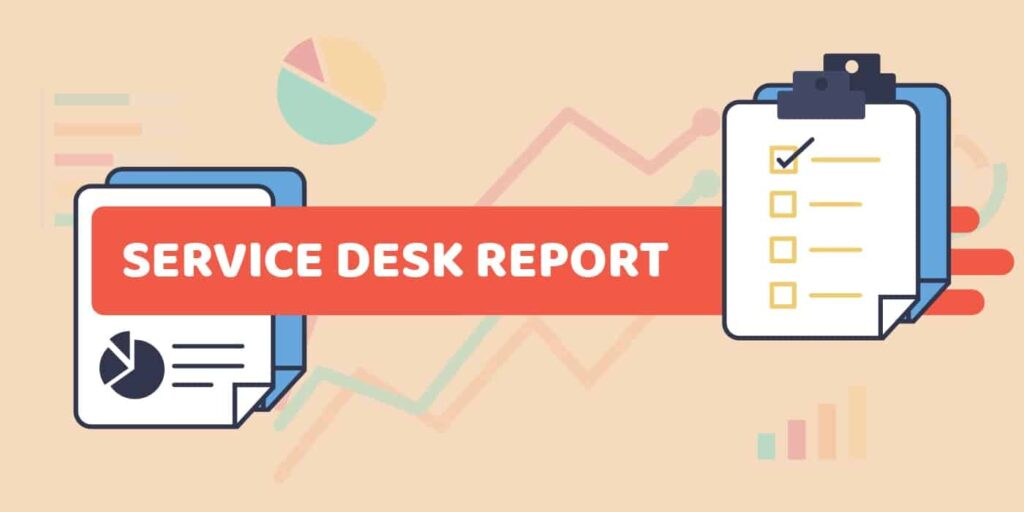IT service desk reporting is an essential IT service management (ITSM) practice – in fact, ITIL 4 has now added a measurement and reporting practice – that can help to identify troublesome processes, additional training requirements, the level of customer (dis)satisfaction, and more. Thankfully, most IT service desk managers understand this and invest time in reporting. However, often the reports produced, and the actions taken as a result, aren’t as effective as they could be.
Is your org investing significant time in creating performance reports that aren’t being read or acted upon by your department? Check out this advice from @ArielG_ #servicedesk Click To TweetSo, if your organization is investing significant time in creating performance reports that aren’t being read or acted upon by your department, then it’s time to put that right. To help, in this article I provide five IT service desk reporting tips. And, in my next article for ITSM.tools, I’ll then provide details on five key IT service desk metrics to consider.
-
Measure and report upon only what you need
With the capabilities of modern ITSM tools, with service desk reporting it can be tempting to run reports on absolutely everything. After all, the more data you have, the more you’ll know about what’s happening, right? Well, not exactly. Because, when your organization is measuring and reporting on too much, the useful data and information get lost in all the “noise.”
Remember: when your organization is measuring and reporting on too much, the useful data and information get lost in all the “noise.” #servicedesk Click To TweetTo prevent this from happening, you start by understanding what your IT department’s – and even business – goals are. This is what is ultimately important. Then look at which data will help you to meet these goals and which data will simply distract you from this.
Remember, sometimes less is definitely more.
-
Keep your performance reports simple
Every month, you probably need to show your IT service desk reports to senior leaders, and you want them to understand what has happened and needs to happen to improve IT support performance and the associated business outcomes.
But are you showing them the service desk reporting you think is important rather than what they think is important? Because people tend to just want to see what they care about, and then to be able to easily understand what it means. Such that your report recipients are likely to pay little attention to what you’re delivering to them report-wise.
The solution is to keep it simple. Focus on what’s really important (for instance, tying into relevant goals). Use visuals to display results and add helpful commentary when needed.
-
Customize ITSM tool generated reports as needed
As an extension of tip #2, don’t fall into the trap of only reporting what’s available “out of the box” from your ITSM tool. It’s likely not going to be exactly the right data for your organization, nor will it always be presented in the right way.
Therefore, there will likely be a need to create custom reports that better meet your organization’s needs for service desk reporting (and those of the stakeholders within it).
Take a look at these five IT #servicedesk reporting tips from @ArielG_ Click To Tweet-
Provide tailored service desk reporting to your key stakeholders
This is another extension to tip #2. Because it’s not uncommon for one standard IT support report to be produced and then sent to everyone. As a result, each stakeholder then needs to sift through the data and information held within the report to find the stuff that they actually care about. This is, of course, if they can actually be bothered to look at the report given the effort needed to find what’s important to them.
So, if possible, tailor your report to different stakeholders – either by type or even individually. Either only include the data that each recipient wants to see or add the “less valuable (to them)” data to the back of the report. Plus, of course, there’s always personalized dashboards in most ITSM tools. Both options are a better way to ensure that your reporting adds value by informing those who need to know about what they need to know about.
-
Regular review your service desk reporting practices
Both the business and IT landscapes are changing rapidly. So, potentially, are external factors such as industry regulations. These will impact business goals and how those goals are achieved. Consequently, regular reviews of what you’re reporting on are required to ensure that metrics and the reports that share them are still relevant, i.e. reporting on the right things.
Importantly, don’t just keep sending out the same old report with the same metrics because no one has responded that the data is no longer relevant. The lack of response is more likely going to be from a lack of readership rather than because things haven’t changed in the service desk reporting data.
Don’t just keep sending out the same old report with the same metrics because no one has responded that the data is no longer relevant, says @ArielG_ #servicedesk Click To TweetThere you have it, my five tips for better IT service desk reporting. What would you add to these? Please let me know in the comments.
Do you want the latest Gartner ITSM Magic Quadrant for free?
You might also like these articles on service availability and availability management.
Ariel Gesto
Ariel is a driven executive with 15+ years of experience, passionate about technology and innovation, and Endeavor entrepreneur since 2013. Proven leadership in building successful businesses from startup to success, with the ability to blend market research and analysis with technical innovation to deliver winning solutions.

